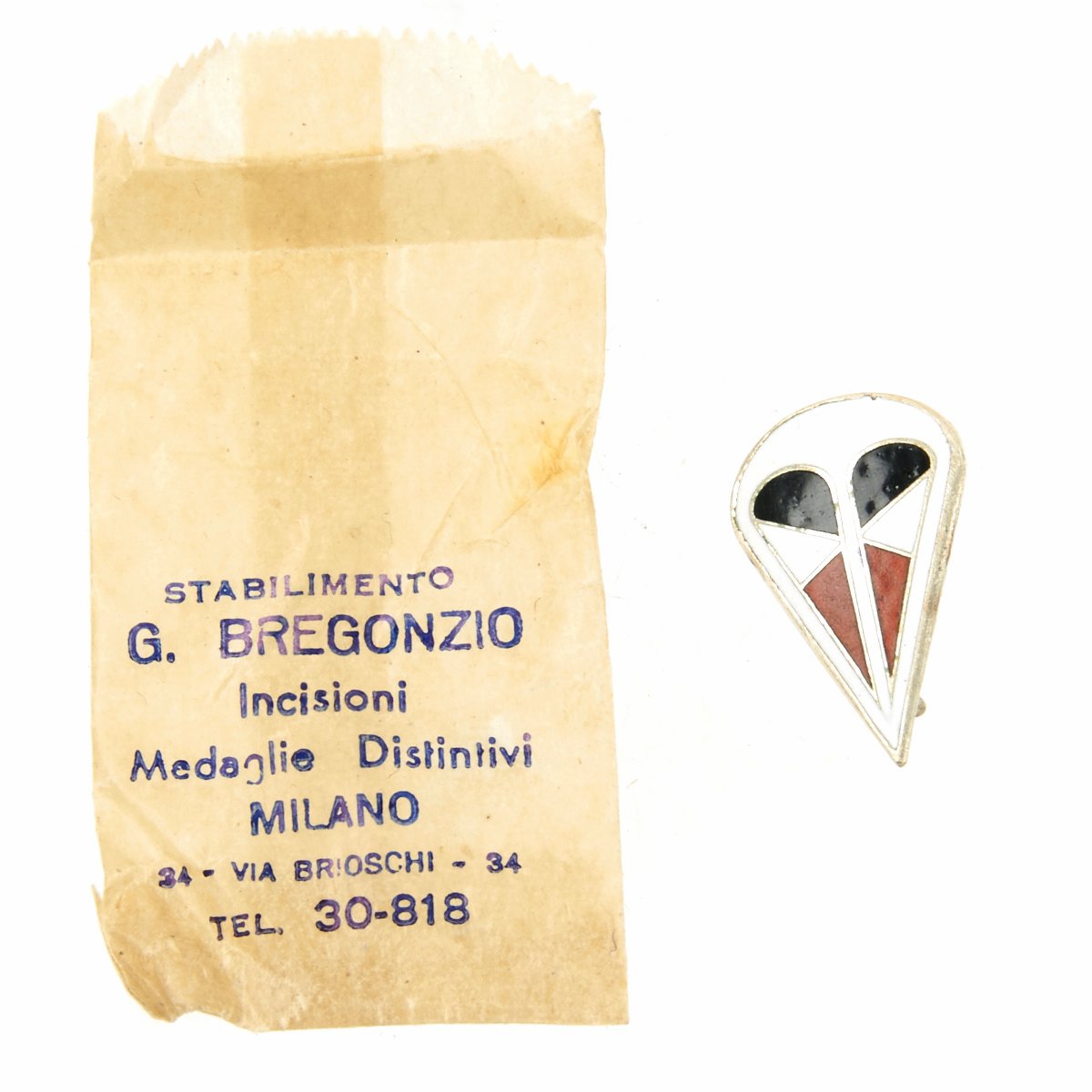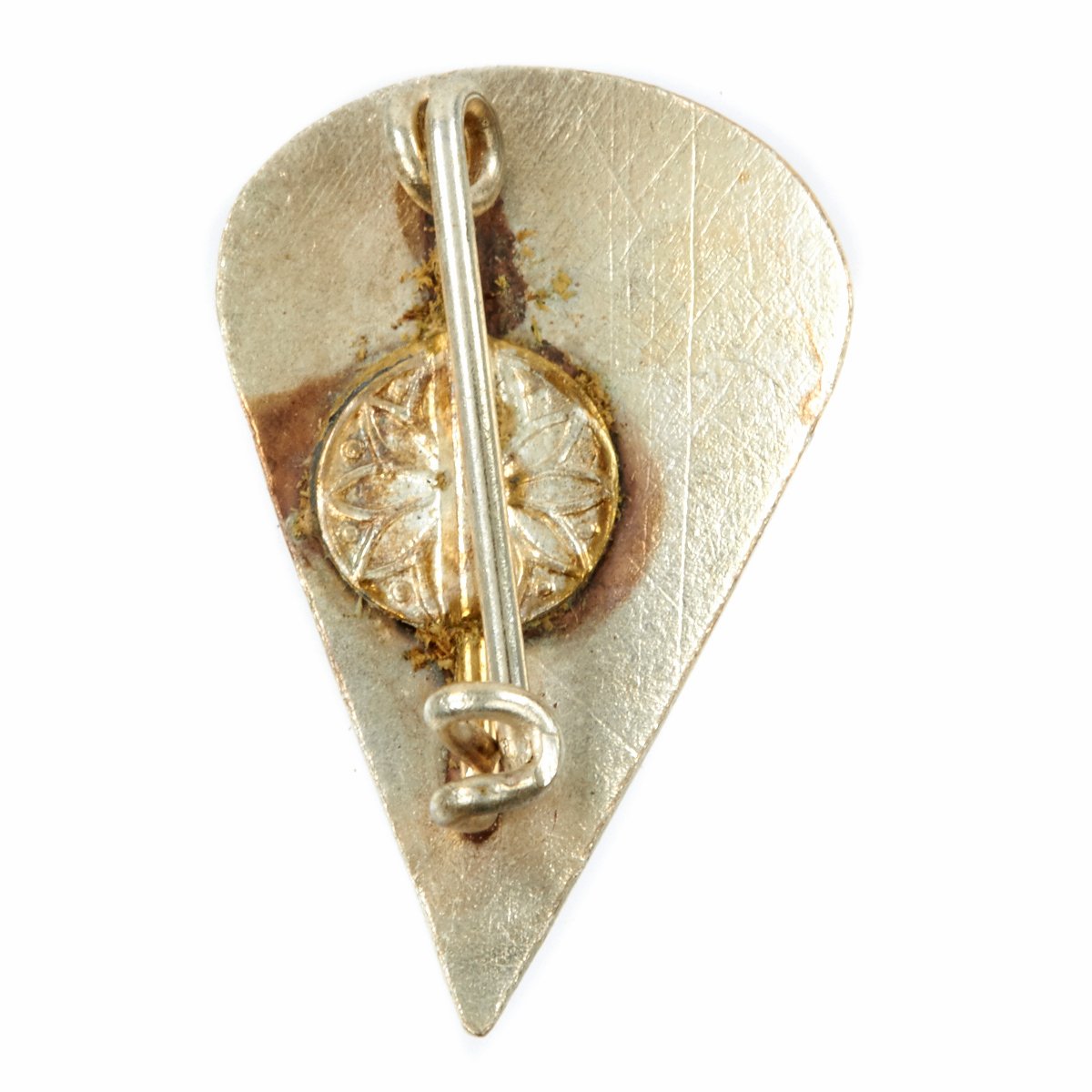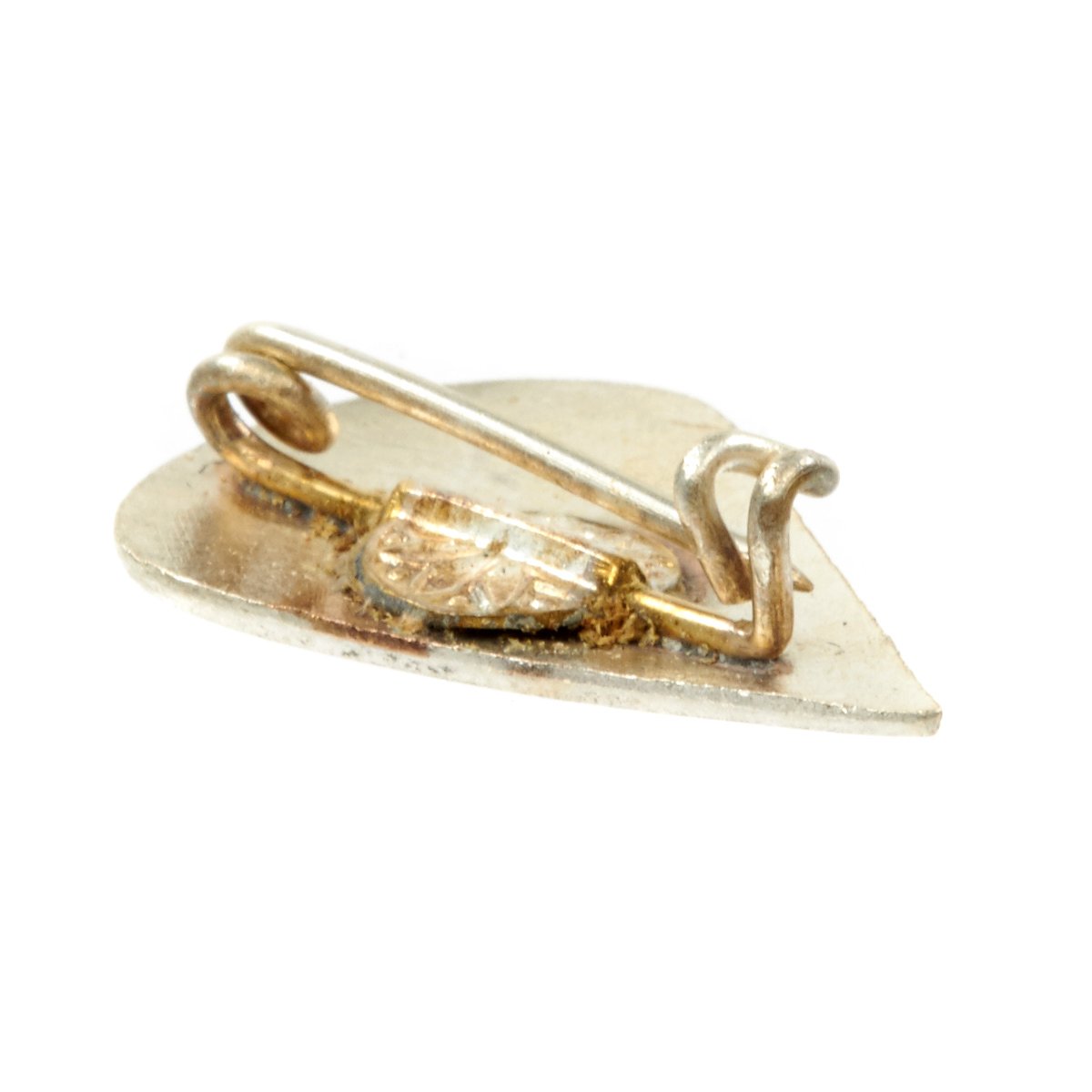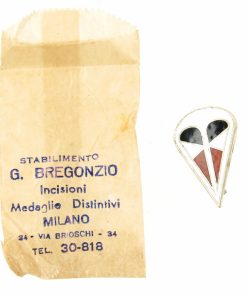Original German WWII Italian Made I Fallschirmkorps M43 Hat Pin with Packet Original Items
$ 195,00 $ 78,00
Original Item: Only One Available. This badge is very interesting. Produced in Italy by the G. Bregonzio factory in Milan in 1944 on behalf of the Oberkommando der Heeresgruppe C (the German military command of the Italian theater of war) led by the Feldmarschall Albert Kesselring, the “kappenabzeichen” (cap badge) was intended for the feldmutze of the members of the I. Fallschirmkorps. As proof of this, there is a photo taken in October 1944 on the southern front that portrays Kesselring together with Marshal Graziani and in which this badge worn by Kesselring is clearly visible on the left side of his M43 feldmutze.
Constructed in the shape of a stylized parachute with enamel front in the colors of the German flag: black, white and red. The reverse has a classic safety pin typical of the Italian badges of the era. Overall condition is very good, and is accompanied by the original paper bag packet.
It is not known exactly how many of these badges were produced and distributed to the I.Fallschirmkorps paratroopers.
The command on the Italian theater of war was assumed by Kesselring on November 21, 1943. Its tasks were fixed in the defense of the front on the Gaeta-Ortona line, the defense of the coasts and the fight against the partisan formations, whose action was then still limited to north eastern Italy. The OB Südwest command remained the main German command structure in Italy until the Liberation. Albert Kesselring command ended on 10 March 1945 and was replaced by General Heinrich Vietinghoff-Scheel.
The headquarters of the command of Kesselring was in the summer of 1943 in Frascati, then in the base of Monte Soratte until the first days of June 1944, then in Monsummano, near Montecatini, until mid-July. Later it was taken to Sant’Andrea Bagni near Parma and, from the second half of September onwards, to Recoaro.
The I. Fallschirmkorps was established in January 1944 using the II. Army Corps of the Luftwaffe (Generalkommando II. Luftwaffen-Feldkorps) previously employed on the eastern front (Panzer-Armeeoberkommando 3). Following the landing allied to Anzio / Nettuno, the staff and its organic units were transferred to that area with the task of detecting the command of the troops deployed in the northern sector of the bridgehead since the XI. Fliegerkorps. The commander was the General der Fallschirmtruppe Alfred Schlemm. Decorated with “Ritterkreuz dees Eisern Kreuze” (Knight Cross of the Iron Cross) was wounded on March 20, 1945 and transferred to the OKL reserve (Oberkommando des Luftwaffe) until 8 May when he was captured by the British and remained in captivity until 22 March 1948.
Fast Shipping with Professional Packaging
Thanks to our longstanding association with UPS FedEx DHL, and other major international carriers, we are able to provide a range of shipping options. Our warehouse staff is expertly trained and will wrap your products according to our exact and precise specifications. Prior to shipping, your goods will be thoroughly examined and securely secured. We ship to thousands clients each day across multiple countries. This shows how we're dedicated to be the largest retailer on the internet. Warehouses and distribution centres can be located throughout Europe as well as the USA.
Note: Orders with more than one item will be assigned a processing date depending on the item.
Before shipping before shipping, we'll conduct a thorough inspection of the items you have ordered. Today, the majority of orders will be delivered within 48 hours. The delivery time will be between 3-7 days.
Returns
The stock is dynamic and we cannot completely manage it because multiple stakeholders are involved, including our factory and warehouse. So the actual stock may alter at any time. It's possible that you may not receive your order once the order has been made.
Our policy is valid for a period of 30 days. If you don't receive the product within 30 days, we are not able to issue a refund or an exchange.
You can only return an item if it is unused and in the same state as the day you received it. You must have the item in its original packaging.
Related products
Uncategorized
Uncategorized
Band of Brothers ORIGINAL GERMAN WWII Le. F.H. 18 10.5cm ARTILLERY PIECE Original Items
Uncategorized
Uncategorized
Uncategorized
Uncategorized
Uncategorized
Uncategorized
Uncategorized
Uncategorized
Uncategorized
Uncategorized
Uncategorized
Uncategorized
Uncategorized
Angolan Rebel 1970s era 60mm Inert Display Mortar from Angolan Civil War Original Items
Uncategorized
Uncategorized
Uncategorized
Armored Burgonet Helmet & Polearm from Scottish Castle Leith Hall Circa 1700 Original Items











































































